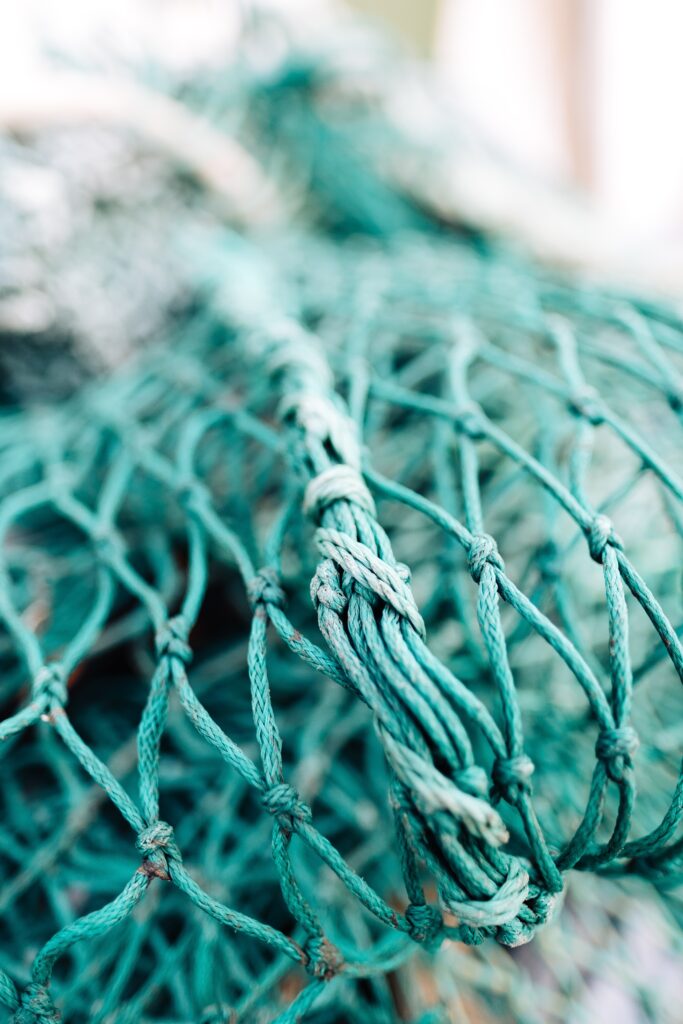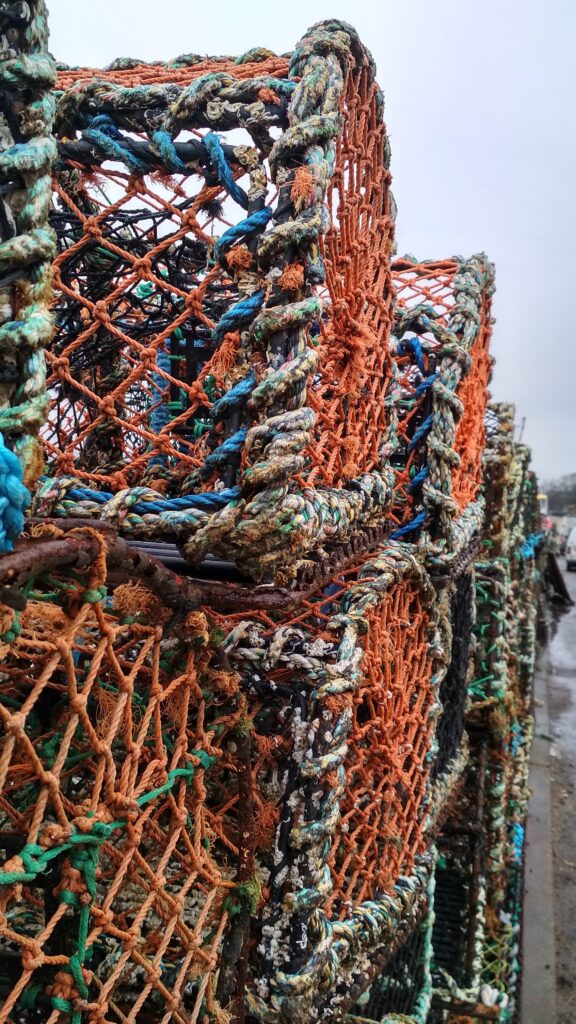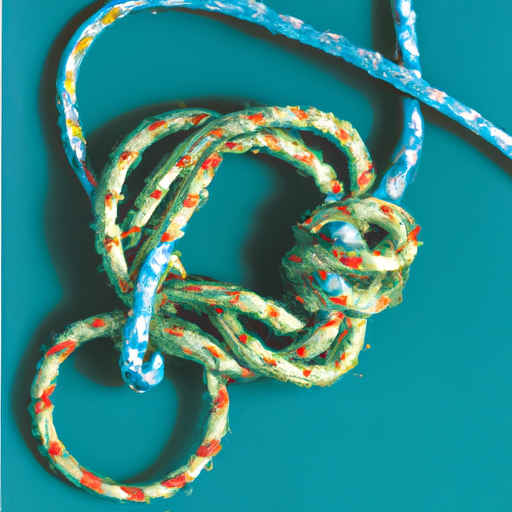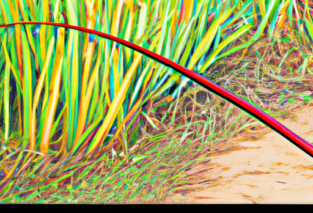If you’re an angler looking to improve your fishing game, one of the most important skills to master is choosing the right fishing line knot. With an array of knots to choose from, it can be overwhelming to know which one is best for your specific fishing situation. In this article, we’ll guide you through the essential knots all anglers should know, providing clear instructions and tips to help you become a knot-tying pro. Say goodbye to lost catches and tangled lines, and say hello to a successful fishing experience.

Understanding Fishing Line Knots
When it comes to fishing, one of the most important skills to have is tying fishing line knots. A strong and secure knot can make the difference between catching the biggest fish of your life and losing it forever. Understanding the different types of fishing line knots and when to use them is crucial for any angler. In this article, we will explore the factors to consider when choosing a fishing line knot, popular fishing line knots, a step-by-step guide to tying them, tips for successfully tying knots, and how to test and strengthen your knots. So grab your fishing line and let’s dive in!
Factors to Consider When Choosing a Fishing Line Knot
Before we dive into the different types of fishing line knots, let’s first discuss the factors you should consider when choosing a knot. The type of fishing line you are using, the size of the line, the strength of the knot, and the type of fishing you will be doing are all important factors to take into account.
Firstly, the type of fishing line you are using will determine which knots are suitable. Different knots work better with certain types of line, such as monofilament, fluorocarbon, or braided line. It’s essential to choose a knot that is compatible with your line to ensure maximum strength.
Secondly, the size of your fishing line will also play a role in determining the best knot to use. Thicker lines may require stronger knots, while thinner lines may need more delicate and compact knots. Always take into consideration the diameter of your line when selecting a knot.
Next, the strength of the knot is of utmost importance. A strong knot should be able to withstand the weight of the fish you are targeting. Weak knots can easily slip or break, leading to lost fish. Make sure to choose a knot known for its strength and reliability.
Lastly, consider the type of fishing you plan on doing. Different fishing techniques require specific knots. For example, if you are using a lure, you may need a knot that allows for natural movement. If you are bottom fishing, you might need a knot that can withstand heavy weights. Consider the specific demands of your fishing style when selecting a knot.

Popular Fishing Line Knots
Now that we understand the factors to consider when choosing a fishing line knot, let’s explore some of the most popular knots used by anglers worldwide. These knots have stood the test of time and proven to be reliable in various fishing scenarios.
Improved Clinch Knot
The Improved Clinch Knot is one of the most commonly used knots by anglers. It is a versatile and straightforward knot that works well with monofilament and fluorocarbon lines. This knot provides a strong connection between the line and the hook or lure, making it ideal for a wide range of fishing applications.
Palomar Knot
The Palomar Knot is known for its simplicity and strength. It is a popular choice for anglers using braided lines but can also be used with monofilament and fluorocarbon lines. The Palomar Knot creates a double-line connection, making it highly reliable and secure.
Uni Knot
The Uni Knot is a versatile knot that is suitable for both monofilament and braided lines. It is known for its simplicity and strength, making it a popular choice among anglers. The Uni Knot can be used for various applications, including attaching hooks, swivels, and lures.
Snell Knot
The Snell Knot is often used by anglers targeting large fish species. It is a strong and reliable knot that is ideal for situations where a direct and straight pull is necessary. The Snell Knot provides a secure connection, allowing for increased hooking power.
Blood Knot
The Blood Knot is commonly used for joining two fishing lines of similar diameter. It is a favorite among fly anglers and is often used to create leaders and tippets. The Blood Knot creates a strong and smooth connection, making it ideal for delicate presentations.
Surgeon’s Knot
The Surgeon’s Knot is a simple and quick knot that is often used for connecting two fishing lines of different diameters. It is a reliable knot that is commonly used for attaching leaders to mainlines. The Surgeon’s Knot is easy to tie and has a high breaking strength.
Albright Knot
The Albright Knot is ideal for connecting different types of fishing lines, such as monofilament to braided line. It is a strong and secure knot that ensures a smooth connection without compromising strength. The Albright Knot is frequently used in saltwater fishing.
Nail Knot
The Nail Knot is a popular choice for fly anglers. It is commonly used to connect the leader to the fly line and provides a smooth and secure connection. Despite its name, a nail is not required to tie this knot. Instead, a small tube or tool can be used to create the desired loop.
Dropper Loop Knot
The Dropper Loop Knot is often used by anglers who want to fish with multiple baits or lures simultaneously. It creates a loop that allows for the attachment of additional lines or leaders. The Dropper Loop Knot is reliable and easy to tie, making it a favorite among anglers targeting multiple fish.
Bimini Twist Knot
The Bimini Twist Knot is a complicated knot but is known for its incredible strength. It is commonly used to create a loop at the end of a line, such as when connecting a leader to the mainline. The Bimini Twist Knot is highly reliable and can withstand heavy loads.
Step-by-Step Guide to Tying Fishing Line Knots
Now that we have explored some of the popular fishing line knots, let’s dive into a step-by-step guide on how to tie them. It’s always helpful to have a visual representation, so follow along and practice tying these knots with your fishing line.
Each knot requires a slightly different technique, so make sure to follow the specific instructions for each knot. Remember to practice tying each knot multiple times until you can confidently tie them without hesitation.
-
Improved Clinch Knot:
- Thread the line through the eye of the hook or lure.
- Take the tag end and make five to seven wraps around the standing line.
- Thread the tag end through the small loop above the eye of the hook or lure.
- Pull the tag end and standing line in opposite directions to tighten the knot.
- Trim the excess tag end.
-
Palomar Knot:
- Double approximately six inches of the line and pass it through the eye of the hook or lure.
- Tie an overhand knot with the doubled line, leaving a large loop.
- Pass the loop over the hook or lure.
- Moisten the line and pull both ends to tighten the knot.
- Trim the excess line.
-
Uni Knot:
- Pass the line through the eye of the hook or lure.
- Create a loop with the tag end and hold it against the standing line.
- Wrap the tag end around both lines for approximately five turns.
- Pass the tag end through the loop at the base of the wraps.
- Moisten the knot and pull the tag end to tighten it.
- Trim the excess tag end.
-
Snell Knot:
- Thread the line through the eye of the hook, pointing the hook shank away from you.
- Wrap the tag end around the shank of the hook, moving towards the eye of the hook.
- Make six to eight wraps around the shank and tag end.
- Pass the tag end through the small loop formed above the eye of the hook.
- Wet the knot and pull the standing line to tighten it.
- Trim the excess tag end.
-
Blood Knot:
- Overlap the ends of two lines.
- Take one end and make five to seven wraps around the other line.
- Thread the end through the loop formed between the lines.
- Repeat the process with the other line, wrapping it around the first line in the opposite direction.
- Pull both ends to tighten the knot.
- Moisten the knot and trim the excess ends.
-
Surgeon’s Knot:
- Overlap the ends of two lines for approximately six inches.
- Tie an overhand knot, creating a small loop.
- Pass both ends through the loop.
- Moisten the knot and pull both ends to tighten it.
- Trim the excess ends.
-
Albright Knot:
- Double the mainline and loop it through the eye of the leader or other line you wish to connect.
- Hold the three lines together and make several wraps with the tag end around all three lines.
- Thread the tag end through the loop created above the wraps.
- Moisten the knot and pull both ends to tighten it.
- Trim the excess tag end.
-
Nail Knot:
- Hold the leader and fly line together, overlapping them by several inches.
- Create a loop between the two lines.
- Hold the loop with one hand and use your other hand to wrap the tag end around both lines and through the loop several times.
- Moisten the knot and pull both ends to tighten it.
- Trim the excess tag end.
-
Dropper Loop Knot:
- Create a small loop in the line, leaving a long tag end.
- Make a simple overhand knot with the long tag end, passing it through the loop.
- Moisten the knot and pull both ends to tighten it.
- Trim the excess tag end.
-
Bimini Twist Knot:
- Double the line to create a large loop.
- Make twenty turns around the doubled line.
- Pass the tag end through the loop created by the turns.
- Moisten the knot and pull the standing line while holding the tag end to tighten it.
- Trim the excess tag end.

Tips for Successfully Tying Fishing Line Knots
Tying fishing line knots can sometimes be tricky, especially for beginners. However, with a bit of practice and the right techniques, you can become a knot-tying pro. Here are some tips to help you tie fishing line knots successfully:
-
Practice, Practice, Practice: The key to mastering fishing line knots is practice. Set aside some time to practice tying knots before your fishing trips. The more you practice, the more confident and efficient you will become.
-
Moisten the Knot: Always moisten the knot before tightening it. This helps reduce friction and allows the knot to slide smoothly. It also prevents the line from overheating and weakening due to friction.
-
Use Tension: Apply tension to the lines throughout the knot-tying process. This ensures that the wraps and loops are tight and secure. Keep the tension consistent while tying the knot and when tightening it.
-
Trim Excess Line: After tying a knot, always trim the excess line as close to the knot as possible without cutting into the knot itself. This reduces the chance of the tag end getting snagged or interfering with the fishing line.
-
Inspect and Test Knots: Before casting your line, inspect the knots to ensure they are tied properly and are secure. Give each knot a gentle tug to test its strength. If any knot feels weak or slips, retie it to avoid the disappointment of losing a fish.
-
Get Familiar with Different Knots: Although it’s tempting to stick to just one knot, it’s important to learn and practice tying various knots. Different fishing scenarios may require different knots. Having a repertoire of knots will allow you to adapt to different fishing conditions.
Practice Makes Perfect: Testing and Strengthening Knots
While tying fishing line knots is an essential skill, it is equally important to test and strengthen the knots to ensure their reliability. A knot that looks well-tied may not always be as strong as it appears. Here are some methods for testing and strengthening your knots:
-
Pull Test: After tying a knot, give it a gentle but firm pull to gauge its strength. Apply gradual and increasing pressure to see if the knot slips or breaks. If the knot holds up under pressure, it is a good indicator of its strength and reliability.
-
Wet the Knot: Before conducting any strength tests, wet the knot. Moistened knots are less likely to slip or weaken due to friction. Moistening the knot simulates the conditions you will encounter while fishing.
-
Retie Weak Knots: If a knot slips or breaks during the pull test, it is crucial to reevaluate and retie the knot. Identify the cause of the failure, such as incorrect tying technique or excessive tension, and make the necessary adjustments.
-
Consider Changing Knots: If you consistently struggle with a particular knot or find it unreliable, consider switching to a different knot. Not all knots work well for everyone, and finding the knot that suits your fishing style and line type is key to achieving strong and secure connections.
Additionally, it is advisable to regularly inspect your knots while fishing. Check for any signs of wear, fraying, or damage. If a knot shows signs of weakness or damage, it is best to retie it to prevent any potential failures.

Frequently Asked Questions (FAQs)
-
Can I use the same knot for different types of fishing lines?
- It is recommended to use knots that are compatible with the specific fishing line you are using. Different types of fishing lines have different properties, such as stretch and slickness, which can affect the performance of certain knots.
-
How do I choose the right knot for my fishing situation?
- Consider the factors mentioned earlier, such as the type of fishing line, line size, fishing style, and target species. Research and practice different knots to determine which ones work best for your specific needs.
-
Is there a “universal” fishing line knot?
- While some knots are more versatile than others, there is no one-size-fits-all knot that is suitable for every fishing situation. It is essential to learn and practice different knots to have a repertoire that covers various scenarios.
-
How tight should I make the knot?
- The knot should be tight enough to secure the connection but not so tight that it causes damage to the fishing line or prevents it from moving naturally.
-
Are there any tools I can use to assist in tying knots?
- There are various tools available that can help with tying knots, such as knot-tying tools, small tubes, or nail clippers. These tools can assist in creating loops, holding lines in place, and trimming excess line.
Conclusion
Tying fishing line knots is an essential skill that every angler should master. The right knot can mean the difference between success and disappointment on your fishing trips. By understanding the factors to consider when choosing a fishing line knot, familiarizing yourself with popular knots, following step-by-step instructions, and practicing consistently, you can become proficient at tying strong and reliable knots. Remember to test your knots and make any necessary adjustments to ensure their strength and reliability. So go ahead, grab your fishing line, and start practicing those knots – the big catch awaits!






